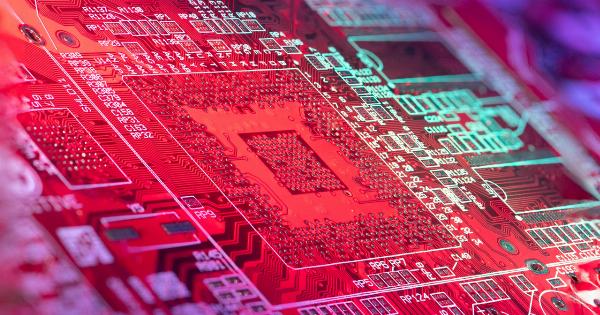Menstruation is a natural and essential process that occurs in the reproductive system of women. This monthly cycle involves the shedding of the uterine lining, accompanied by hormonal changes that can sometimes lead to various periodic disorders.
These disorders can cause discomfort, pain, and disruption in daily life for many women. In this article, we will explore the common causes and effective solutions for periodic disorders.
1. Dysmenorrhea: The Curse of Painful Periods
Dysmenorrhea, commonly known as painful periods, is a prevalent periodic disorder characterized by severe uterine cramps and abdominal pain during menstruation.
The exact cause of dysmenorrhea is not fully understood, but it is often linked to excessive levels of prostaglandins, hormone-like compounds that stimulate uterine contractions. Other factors such as stress, poor diet, and underlying medical conditions may also contribute to the intensity of dysmenorrhea.
2. Amenorrhea: Absence of Menstruation
Amenorrhea refers to the absence of menstruation in women of reproductive age.
Primary amenorrhea occurs when a girl does not experience her first period by the age of 16, while secondary amenorrhea is defined as the absence of menstrual periods for three or more consecutive months in women who have previously menstruated. Common causes of amenorrhea include hormonal imbalances, polycystic ovary syndrome (PCOS), excessive exercise, low body weight, and certain medical conditions.
3. Menorrhagia: Abnormally Heavy Menstrual Bleeding
Menorrhagia is a menstrual disorder characterized by abnormally heavy and prolonged menstrual bleeding. Women with menorrhagia often experience soaking through sanitary pads or tampons every hour and may also pass blood clots.
The causes of menorrhagia are diverse and can range from hormonal imbalances, uterine fibroids, polyps, and even certain medications. In some cases, underlying medical conditions such as endometriosis or bleeding disorders may contribute to excessive menstrual bleeding.
4. Premenstrual Syndrome (PMS): The Emotional Roller Coaster
Premenstrual Syndrome, or PMS, encompasses a wide range of physical and emotional symptoms that occur in the days leading up to menstruation.
Common symptoms of PMS include mood swings, irritability, bloating, breast tenderness, fatigue, and food cravings. While the exact cause of PMS is unknown, hormonal fluctuations and changes in brain chemicals are believed to play a significant role. Stress, poor sleep quality, and unhealthy lifestyle choices can exacerbate the severity of PMS symptoms.
5. Premenstrual Dysphoric Disorder (PMDD): A Step Ahead of PMS
Premenstrual Dysphoric Disorder, or PMDD, is a severe form of PMS that affects a smaller percentage of women.
PMDD is characterized by extreme mood swings, severe irritability, depression, anxiety, and other debilitating symptoms that significantly impact daily life. The hormonal fluctuations during the menstrual cycle are thought to be the underlying cause of PMDD. Genetic factors and certain brain chemical imbalances may also contribute to the development of this disorder.
6. Polycystic Ovary Syndrome (PCOS): A Complex Hormonal Condition
Polycystic Ovary Syndrome, or PCOS, is a common hormonal disorder that affects many women of reproductive age. Women with PCOS have enlarged ovaries containing multiple small cysts, which can result in hormonal imbalances.
Symptoms of PCOS include irregular periods, infertility, excess hair growth, acne, and weight gain. PCOS is believed to have a genetic component but is also influenced by lifestyle factors such as diet and exercise.
7. Endometriosis: When the Uterine Lining Goes Astray
Endometriosis is a painful condition in which tissue similar to the uterine lining grows outside the uterus, commonly in the pelvic area. This abnormal tissue growth can cause pelvic pain, heavy menstruation, painful intercourse, and even infertility.
The exact cause of endometriosis is unknown, but it is hypothesized that retrograde menstruation, genetic factors, and hormonal imbalances play a role in its development.
8. Irregular Menstrual Cycles: When Predictability Fades
Irregular menstrual cycles are characterized by variations in the length of time between periods or inconsistent flow patterns. While occasional irregularities are normal, persistent irregularities can indicate underlying issues.
Causes of irregular menstrual cycles may include hormonal imbalances, stress, excessive exercise, sudden weight loss or gain, and certain medical conditions such as polycystic ovary syndrome (PCOS) or thyroid disorders.
9. Midcycle Pain: The Mystery of Ovulation Pain
Midcycle pain, often referred to as ovulation pain, is experienced by some women during the release of the egg from the ovary. The pain is usually felt on one side of the lower abdomen and can last for a few hours to a couple of days.
The exact cause of midcycle pain is not well understood, but it is believed to be associated with the stretching of the ovarian wall and irritation of nearby tissues during ovulation. Midcycle pain is generally harmless, but if the pain is severe or persistent, medical attention should be sought.
10. Solutions and Management Techniques
While periodic disorders can cause significant discomfort and disruption, several solutions and management techniques can help alleviate symptoms and improve overall well-being. These may include:.
- Pain relief: Over-the-counter pain medications such as nonsteroidal anti-inflammatory drugs (NSAIDs) can provide relief from menstrual cramps and pain.
- Hormonal contraceptives: Oral contraceptives, hormonal patches, or intrauterine devices (IUDs) can regulate menstrual cycles, reduce pain, and manage symptoms of period-related disorders.
- Lifestyle changes: Adopting a healthy lifestyle with a balanced diet, regular exercise, stress management, and sufficient sleep can help improve overall menstrual health and reduce the severity of symptoms.
- Alternative therapies: Techniques such as acupuncture, yoga, and relaxation exercises may provide relief from pain and help manage stress levels.
- Medical interventions: In severe cases or when other treatments do not provide adequate relief, medical interventions like surgery may be necessary. These include procedures to remove uterine fibroids, endometrial ablation, or laparoscopic surgery to treat conditions like endometriosis.
It is important for women experiencing periodic disorders to consult with healthcare professionals to determine the underlying causes and develop personalized treatment plans.





























